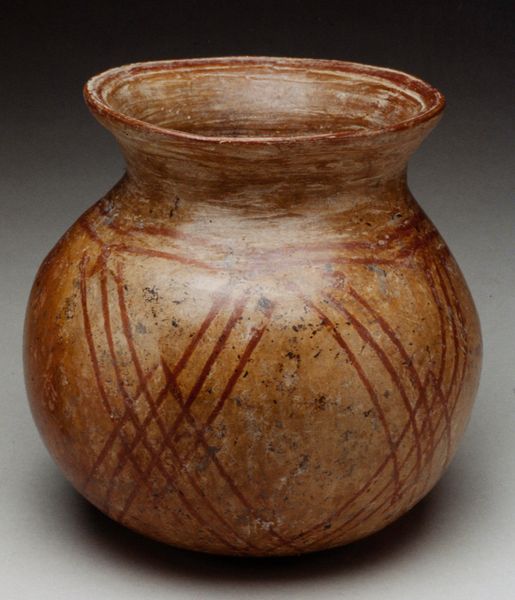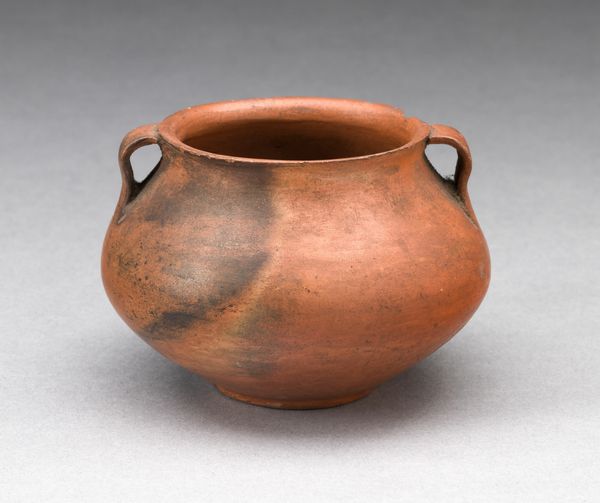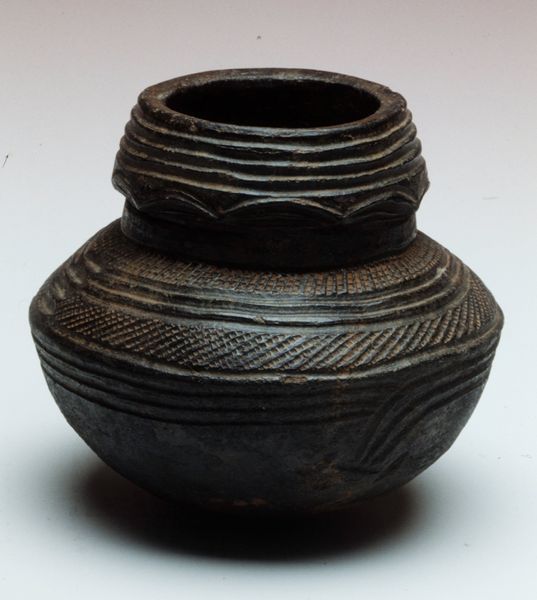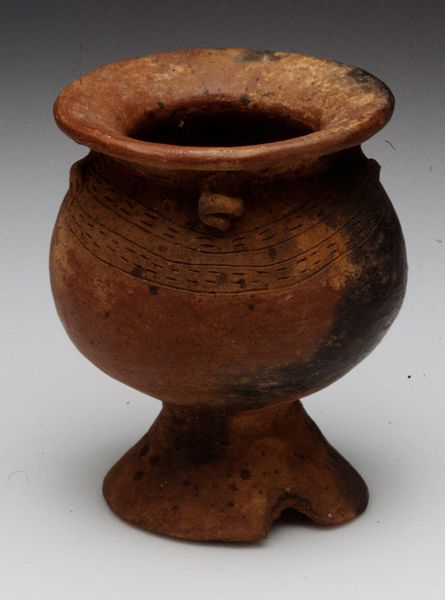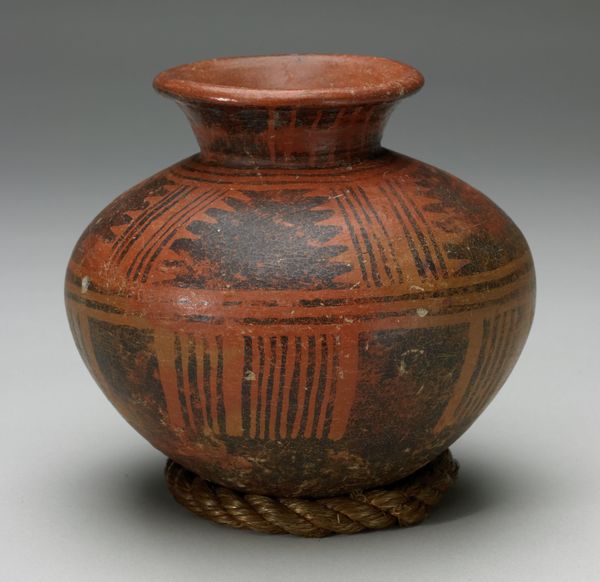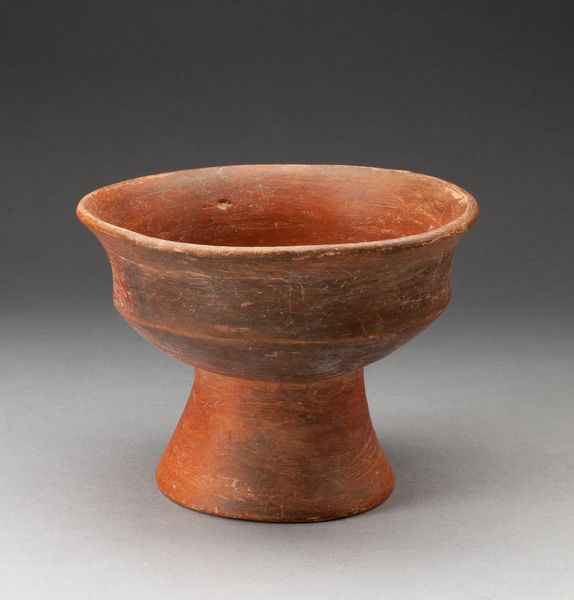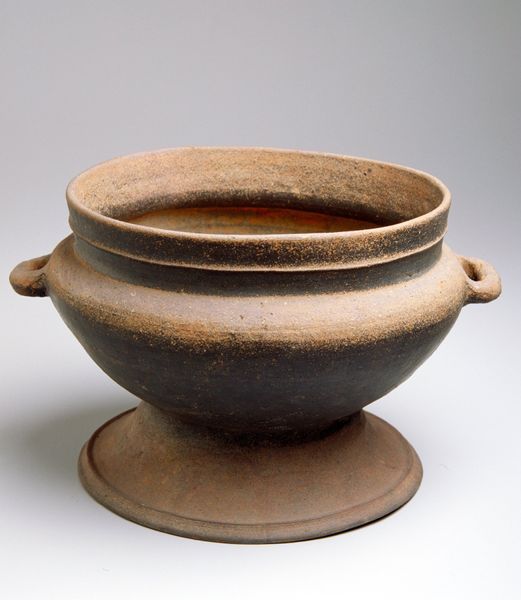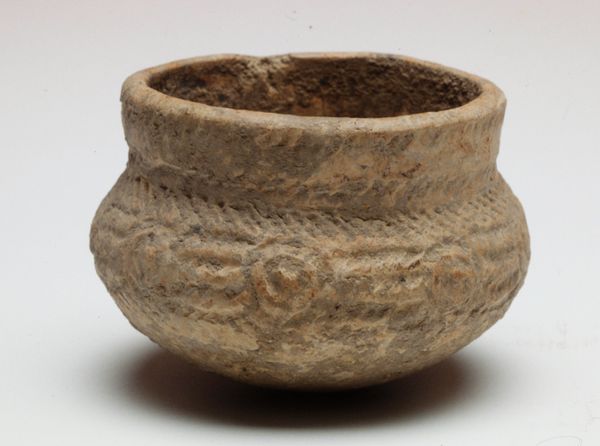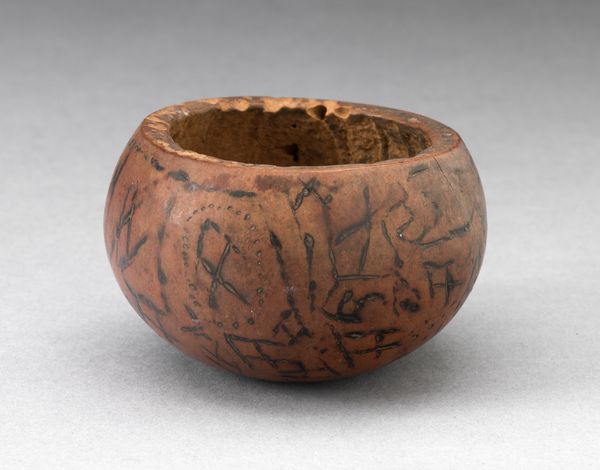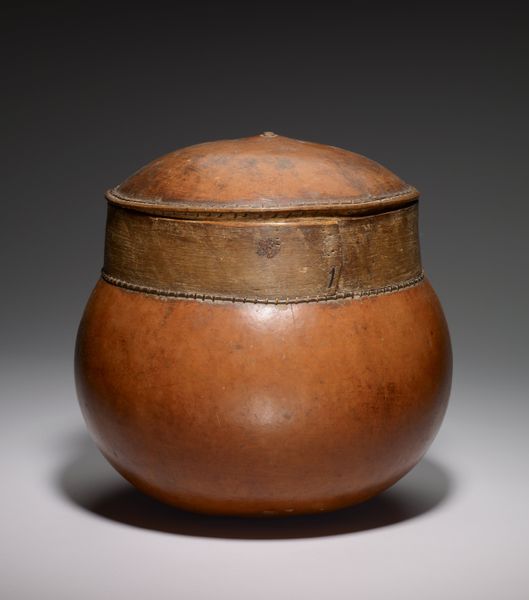
ceramic, earthenware, terracotta
#
ceramic
#
earthenware
#
terracotta
Dimensions: 5 3/4 x 4 1/2 x 4 1/2 in. (14.61 x 11.43 x 11.43 cm)
Copyright: Public Domain
Curator: Here we have a Nicoya earthenware bowl, dating back to approximately 500 AD. It's a remarkable example of ancient ceramic work, currently held in the collection of the Minneapolis Institute of Art. Editor: My immediate reaction is how earthy and humble it feels. The rounded shape and reddish-brown tones are grounding, almost primal. I appreciate its unassuming presence. Curator: Right, and when considering earthenware as a material, its ubiquity across cultures highlights a reliance on readily available resources. The labour involved in sourcing, shaping, and firing would have been a significant investment of time and energy. It reflects the direct relationship between maker and environment. Editor: I agree, there's a deep connection there. But beyond just practicality, I see the vertical and horizontal etched lines as deliberate choices carrying meaning. In Indigenous American art, repeated motifs like these often relate to concepts of cosmology or the natural world—maybe water, land, and sky interacting. How can we interpret this particular composition from an intercultural perspective? Curator: That's interesting. I focus primarily on the form itself and its implied usage, maybe for holding grain or liquids. How would the function have impacted design choices, or did certain stages in crafting offer potential for further embellishment, given technological limits? These variables offer avenues for contextualizing this artwork in relation to ancient craftsmanship traditions Editor: But what if we move past strictly utilitarian concerns and consider how the form intersects with larger social roles? Whose hands would have made and utilized this bowl and in what settings? Is the form communicating status and tradition across marginalized people's cultural landscape? Considering indigenous experience will reveal that material conditions aren't just objects or labor but are about connection, value, and communal relations that might be a key for fully experiencing ancient civilizations through the artistic remnants it has left us with. Curator: Indeed, the intersecting roles provide nuanced pathways for a full, cultural and social insight into an artwork such as this bowl. It represents labour, craft and an avenue for exploring different cultural experiences for indigenous communities. Editor: Absolutely. By embracing multiple lenses, we can more richly understand the nuanced interplay of material, identity, and context this vessel embodies.
Comments
No comments
Be the first to comment and join the conversation on the ultimate creative platform.

